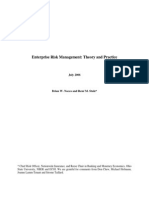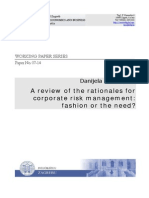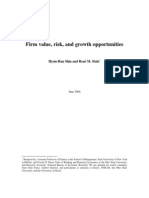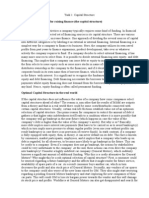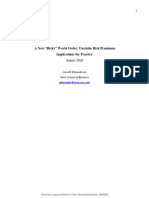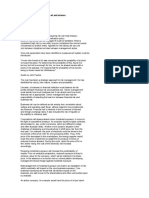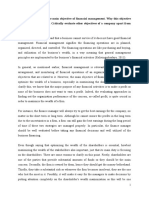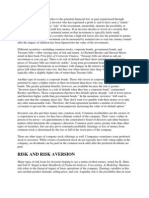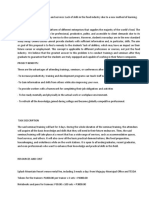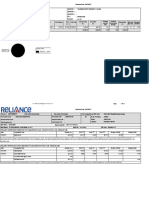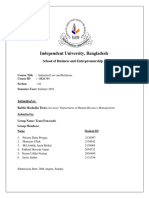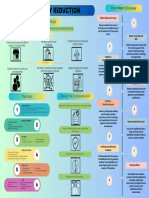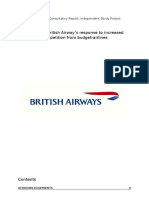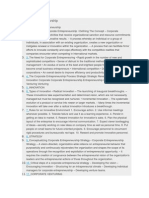0% found this document useful (0 votes)
14 views6 pagesAfm CS
The document discusses the importance of risk management in corporate finance, particularly in relation to ACCA exams, emphasizing the need for students to understand both theoretical and practical aspects of risk management. It highlights that while larger companies may not benefit from risk management due to diversified equity holdings, smaller companies can gain value from it, especially in terms of reducing financial distress and optimizing capital structure. Empirical research suggests that although corporations believe risk management creates value, a direct link between risk management activities and increased corporate value has not been conclusively established.
Uploaded by
a.ononibeluckyCopyright
© © All Rights Reserved
We take content rights seriously. If you suspect this is your content, claim it here.
Available Formats
Download as DOCX, PDF, TXT or read online on Scribd
0% found this document useful (0 votes)
14 views6 pagesAfm CS
The document discusses the importance of risk management in corporate finance, particularly in relation to ACCA exams, emphasizing the need for students to understand both theoretical and practical aspects of risk management. It highlights that while larger companies may not benefit from risk management due to diversified equity holdings, smaller companies can gain value from it, especially in terms of reducing financial distress and optimizing capital structure. Empirical research suggests that although corporations believe risk management creates value, a direct link between risk management activities and increased corporate value has not been conclusively established.
Uploaded by
a.ononibeluckyCopyright
© © All Rights Reserved
We take content rights seriously. If you suspect this is your content, claim it here.
Available Formats
Download as DOCX, PDF, TXT or read online on Scribd
/ 6

